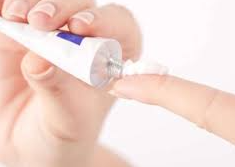Hydroquinone USP
DERMATOLOGY/COSMETIC INGREDIENT
CAS no. 123-31-9
Hydroquinone is used as a topical application in skin whitening to reduce the color of skin.
It is also a major component in most black and white photographic developers for film and paper.
BHM Chemicals is a supplier of high quality USP grade Hydroquinone.
Minimum order quantity: 25kg
Hydroquinone, a compound with the chemical formula C6H6O2, is a potent and widely used skin-lightening agent with a diverse range of applications.
Properties
- Chemical Structure. Hydroquinone, also known as 1,4-benzenediol, is a simple organic compound characterized by two hydroxyl (OH) groups attached to a benzene ring. This structure is fundamental to its chemical properties and biological activities.
- Skin-Lightening Properties. One of the most well-known properties of hydroquinone is its ability to inhibit the production of melanin, the pigment responsible for the color of skin, hair, and eyes. Hydroquinone achieves this by disrupting the enzymatic processes involved in melanin synthesis, particularly the conversion of tyrosine to melanin. As a result, hydroquinone is a powerful depigmenting agent and is commonly used to treat various skin conditions related to hyperpigmentation.
- Antioxidant Properties. Hydroquinone also possesses antioxidant properties. Its hydroxyl groups can scavenge free radicals, which are unstable molecules that can damage skin cells and accelerate the aging process. By neutralizing free radicals, hydroquinone helps protect the skin from oxidative stress and premature aging.
Uses
- Skin Lightening. Hydroquinone is primarily used for its skin-lightening properties. It is a key ingredient in many over-the-counter and prescription topical creams designed to treat hyperpigmentation disorders such as melasma, post-inflammatory hyperpigmentation, and age spots. These conditions result from an overproduction of melanin, leading to uneven skin tone and dark patches. Hydroquinone works by inhibiting the activity of tyrosinase, an enzyme involved in melanin synthesis, thereby reducing the appearance of dark spots and promoting a more even complexion.
- Treatment of Skin Conditions. Aside from its cosmetic applications, hydroquinone is also used to treat various skin conditions, including vitiligo and some forms of dermatitis. Vitiligo is a chronic skin disorder characterized by the loss of skin pigmentation in certain areas, resulting in white patches. Hydroquinone can be used in combination with other treatments to help repigment the affected areas.
- Photographic Chemical. In the field of photography, hydroquinone is used as a reducing agent in the development of black-and-white films and prints. It plays a crucial role in reducing exposed silver halide crystals, resulting in the formation of a visible image.
Benefits
- Effective Hyperpigmentation Treatment. The primary benefit of hydroquinone is its effectiveness in treating hyperpigmentation disorders. Numerous studies have demonstrated its ability to reduce the appearance of dark spots and improve overall skin tone. A study published in the "Journal of Dermatological Treatment" in 2019 found that a hydroquinone-based cream was highly effective in treating melasma, with significant improvements in pigmentation observed after 12 weeks of use [^1].
- Skin Rejuvenation. Hydroquinone's antioxidant properties can help rejuvenate the skin by protecting it from oxidative damage caused by UV radiation and environmental pollutants. This can lead to a more youthful and radiant complexion.
Safety Considerations
While hydroquinone is effective, its use is not without controversy. Some concerns have been raised about its safety and potential side effects. These concerns include:
- Skin Irritation. In some individuals, hydroquinone may cause skin irritation, redness, or a burning sensation. It is essential to perform a patch test before using any hydroquinone-containing product and to follow the instructions carefully.
- Long-Term Use. Prolonged and excessive use of hydroquinone may lead to a condition called ochronosis, characterized by the darkening and thickening of the skin. This condition is more commonly associated with the use of high concentrations of hydroquinone and long-term application.
- Regulatory Considerations In some countries, hydroquinone is subject to regulatory restrictions or has been banned due to safety concerns. It is crucial to be aware of the regulations governing hydroquinone in your region.
Hydroquinone is a versatile compound with properties that make it highly effective in treating hyperpigmentation and other skin-related issues. Its ability to inhibit melanin production and its antioxidant properties contribute to its widespread use in the cosmetic and dermatological industries.
However, individuals considering the use of hydroquinone should be aware of potential side effects and regulatory restrictions in their area. Consulting with a dermatologist or healthcare professional is recommended to determine the most suitable treatment plan and product concentration.
While hydroquinone remains a valuable tool in the field of dermatology, ongoing research and development continue to explore alternative treatments with potentially fewer side effects, emphasizing the importance of staying informed about the latest advancements in skincare.
Please note that the information provided in this article is for informational purposes only and should not be considered a substitute for professional medical advice. Always consult with a healthcare provider before starting any skincare regimen or treatment.
References:
- Sarkar R, et al. (2019). A multicenter, open-label, prospective study to assess the efficacy, safety, and tolerability of a combination regimen with hydroquinone 4% + tretinoin 0.05% cream and sunscreen SPF 30 in the treatment of melasma in Indian patients. Journal of Dermatological Treatment
- Grimes PE. (2007). The safety and efficacy of salicylic acid chemical peels in darker racial-ethnic groups. Dermatologic Surgery
- American Academy of Dermatology. (2016). Hydroquinone. AAD.org
- National Center for Biotechnology Information. (2021). Hydroquinone. PubChem
PRODUCT SPECIFICATION
CHARACTERISTICS
Content
Identification
Melting range
Water
Residue on ignition
HAZARDOUS IDENTIFICATION
STORAGE
Colourless or almost colourless crystals or crystalline powder darkening on exposure to air and light.
99.0% to 100.5% C6H6O2 (anhydrous basis)
Conforms to USP tests
1720C to 1740C
Not more than 0.5%
Not more than 0.5%
Hazardous class 9, UN 3077, Packing group III
Keep container tightly closed in a cool and dry place and protected from light. Protect from contamination by foreign substances.









